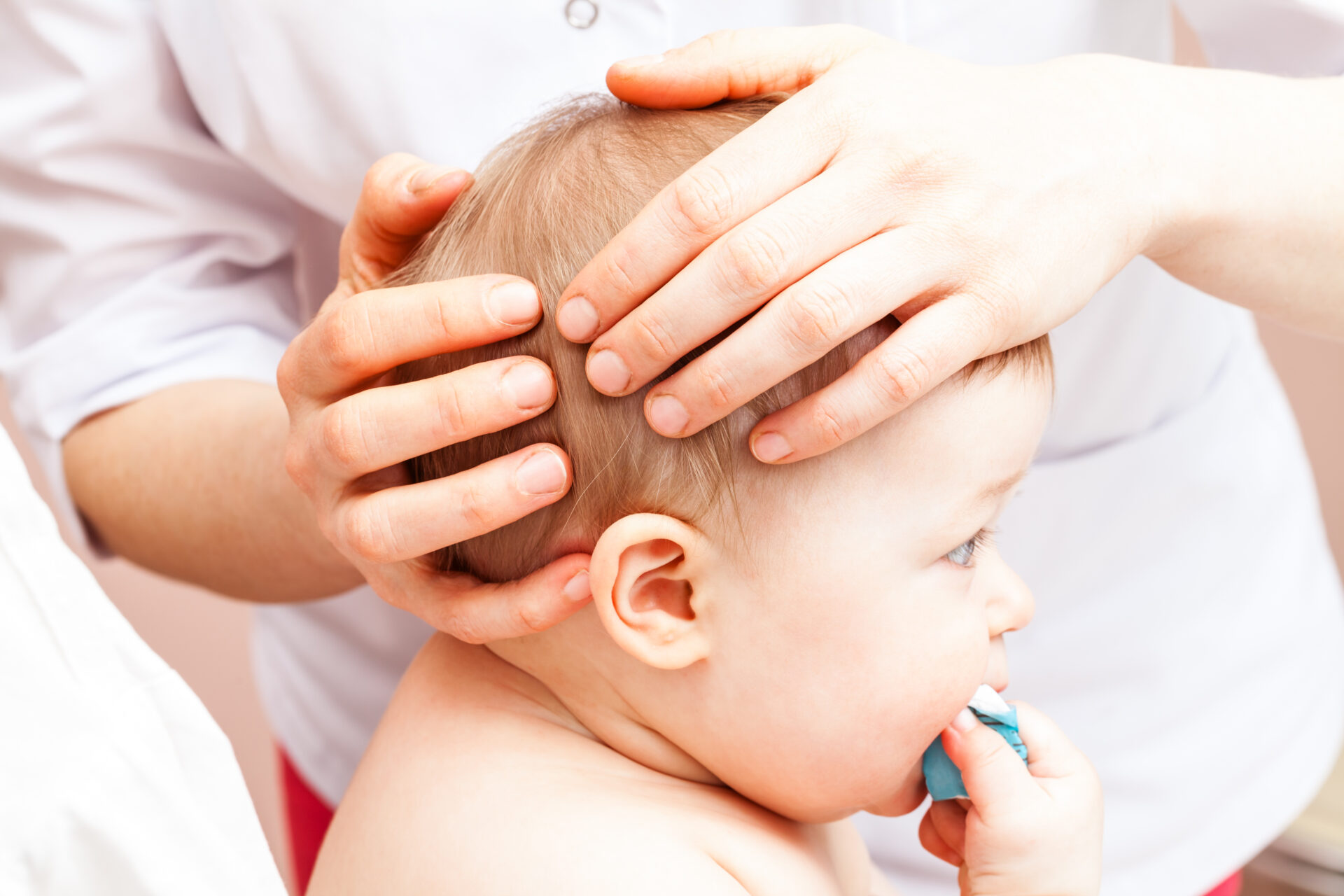Torticollis: Symptoms, causes, treatment
Torticollis: Symptoms, causes, treatment
Torticollis is a condition that some babies have involving the muscles of the neck that causes the head to tilt down. The term comes from the Latin words tortus, which means twisted, and collum, which means neck.
If your baby has the condition at birth, it’s called congenital muscular torticollis. That’s the most common type.
Babies can also develop the condition after birth. Then it’s called “acquired,” rather than congenital. Acquired torticollis may be linked to other, more serious medical issues.
What causes torticollis?
There is a long muscle on each side of our neck that runs from the back of our ear to our collarbone. It is called the sternocleidomastoid, or SCM for short. The SCM muscle controls how the head moves — side to side, and up and down.
When your baby has torticollis, this ropy muscle is shortened on one side. Why does it become shortened? Your baby might have been cramped in the womb or may have been in an abnormal position, such as a breech position. That can put extra pressure on one side of your infant’s head, which can cause the SCM to tighten. If your doctor used forceps or a vacuum device during delivery, those also might have put pressure on your baby’s SCM.
Because there are different types of torticollis, it is important to know the root cause so that your child can get the proper care and treatment as quickly as possible.
What are the symptoms?
You may not notice anything unusual about your baby for the first 6 to 8 weeks. It’s common for torticollis symptoms to become obvious once an infant gains more control of the head and neck.
With congenital muscular torticollis:
- A baby doesn’t easily turn his/her head from side to side or up and down easily.
- The head tilts to one side while the chin tilts to the other.
- Your baby prefers to look over the shoulder at you. Their eyes don’t follow you because that would require turning their head.
- Your baby may have trouble breastfeeding on one side or prefer to feed on one side only.
- Your baby works hard to turn toward you, struggles to turn their head all the way, and becomes upset because the movement is hard.
- A baby might start getting a flat head on one or both sides from lying in one position all the time. This is called “positional plagiocephaly.”
- A small, pea-sized lump is sometimes found on the SCM muscle. It isn’t dangerous, and typically goes away within 6 months.
With acquired torticollis:
- There is limited range of motion in the head and neck.
- The head tilts to one side while the chin tilts to the other.
- With a condition called benign paroxysmal torticollis, there may be recurrent episodes, or “attacks,” of head tilting; often these attacks are accompanied by other symptoms, such as vomiting, irritability and/or drowsiness.
- Additional symptoms vary according to the cause of the torticollis.
Treatment for torticollis
For babies with congenital muscular torticollis, the most common form of pediatric torticollis, regular visits to a pediatric physical therapist may be required based on the severity of the torticollis. PTs will instruct the family on various neck stretches to perform several times a day, plus activities to encourage the baby to turn their head on their own.
The best outcomes are achieved when physical therapy is started before three months of age. Physical therapy treatment for torticollis usually lasts until the child no longer has a head tilt/turn preference or other abnormal motor patterns.
Our physical therapists design treatment to meet each baby’s needs, often including:
- Exercises to stretch and strengthen a baby’s muscles
- Education on positioning, carrying and holding the baby
- Ways for parents to help their babies learn age-appropriate movement
- Instruction on how to help your baby tolerate tummy time; while supervised, babies should play on their tummies for a total of an hour or more every day
Sources:
- childrenswi.org/medical-care/physical-and-occupational-therapy/treatments/torticollis
- childrenshospital.org/conditions-and-treatments/conditions/t/torticollis
- webmd.com/parenting/baby/what-is-torticollis

